Seedless fruits are much more appealing than fruits with seeds because, in many cases, fruit seeds are big, annoying, and need to be picked out and thrown away. Seedless fruits, however, are hassle-free and make eating fruit much more enjoyable.
Fruit plays a vital role in keeping excellent health, so it’s helpful to be familiar with the diverse types of seedless fruits that may be eaten fresh or easily used to make healthy snacks, cocktails, and smoothies.
There are seedless varieties of many popular fruits, including watermelons, grapes, and citrus.
It’s so satisfying to enjoy the taste of these fabulous fruits without the inconvenience of picking out the inedible seeds.
If you’re curious about the types and varieties of seedless fruits available, read on to find out more!
Table of Contents
Science Behind Seedless Fruits
Parthenocarpy is a biological process that results in seedless fruits.
Parthenocarpic fruits develop when pollination does not occur or does not finish with fertilization. Farmers and seedless fruit producers do this in a number of ways.
Manipulation of the plant can be achieved by using plant hormones, controlling how plants divide their chromosomes, or just by putting nets over the trees or plants to stop pollination.
1. Watermelons

Who doesn’t enjoy a delicious, juicy watermelon? While some people don’t mind the hard seeds embedded in the pulp, most people don’t like them. Unsurprisingly, many of us are prepared to pay more for seedless watermelons just to avoid dealing with the seeds.
But have you ever wondered how seedless watermelons are made since there is clearly a lack of mature seeds inside?
Seedless Watermelon, or… Triploid
Let’s go back to the beginning.
Just like a human, a watermelon with seeds has two sets of chromosomes. Scientifically, these watermelons are known as “diploid.”
On the other hand, a watermelon with no seeds is a “triploid,” meaning it has three sets of chromosomes, instead.
Because of this, the seedless watermelon (or triploid) cannot produce the mature seeds necessary to grow another plant.
So, to make another seedless watermelon, you need a plant with two sets of chromosomes and a plant with four sets of chromosomes.
Colchicine is given to watermelon seedlings in order to make a plant with four sets of chromosomes. This highly toxic substance causes the chromosomes in plant cells to duplicate.
A seedless watermelon is formed when a female flower of a plant with four sets of chromosomes is pollinated by a male flower of a plant with two sets of chromosomes.
So, a farmer must cultivate three different chromosomal watermelon kinds to produce seedless melons.
According to the American website of the National Watermelon Promotion Board, seedless watermelons have been around for about 50 years. Those white “seeds” that you will find inside them are empty seed coats that have failed to develop and can be eaten without fear.
Seedless watermelons are preferable because of their high sugar content, practicality, and productivity. But growing fruit without seeds requires dedication, devotion, and commitment to the technology required.
2. Bananas

One of the most often consumed fruits in the world is bananas. Originating in Papua New Guinea and Asia between 7,000 and 10,000 years ago, bananas are often considered the first fruit ever to be grown.
The primary difference between wild and farmed bananas is obvious. The bananas that end up on our tables have been grown to have no seeds.
The ‘Cavendish’ variety, the brilliant yellow bananas often found in supermarkets, accounts for 99 percent of all bananas shipped.
But this was not always the case. There were several kinds of bananas a century ago, with the ‘Gros Michel’ variety being the most widespread for much of the nineteenth century.
However, that crop was wiped out in the 1950s by a strain of Panama disease, commonly known as banana wilt.
That’s when Banana ‘Cavendish’ took over the world. ‘Cavendish’ was resistant to the Panama disease and perfectly suited to market demands. It stays green for several weeks after harvesting, has a high yield rate and looks good.
Are Bananas Clones?
Without the seeds in the fruit, how do new banana trees sprout?
You may be surprised to learn that bananas are actually clones! Banana trees reproduce through suckers, which are clones of the bigger tree from which the new sucker sprouts.
These suckers look like separate, smaller trees growing next to the big tree, but they are actually shoots that come from the roots of the main tree. These suckers are cut from old plants and used to create new banana trees.
Bananas grown on farms are all clones since their DNA is identical. So, every single banana grown for sales purposes is part of the same plant. It’s one gigantic collective creature, unparalleled worldwide. It’s crazy to think that every banana you buy is the same as the one next to it.
Economically, growing just a single clone of bananas was genius. Biologically, it posed problems. A disease that could possibly kill even one banana plant would be able to kill them all.
As a result, the banana as we know it would disappear.
3. Pineapple
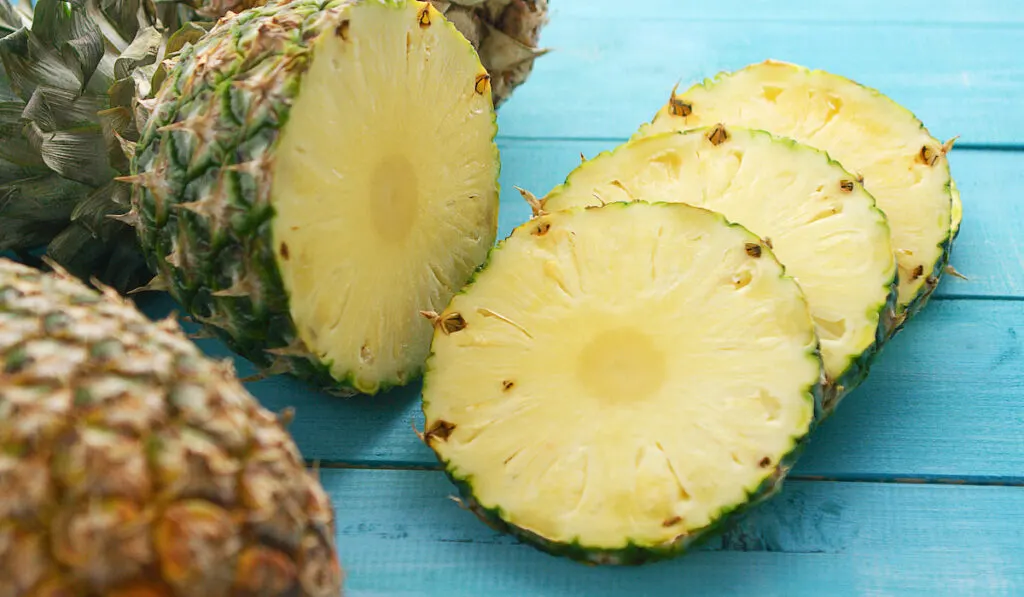
The countries of Brazil, Paraguay, and Uruguay lay claim to being the original homes of the pineapple. However, pineapples are now cultivated in all tropical regions of the world.
Many people think that pineapples grow on palm trees, but this is not even close to the truth.
Pineapple plants are only 5 feet tall and grow on the ground like cabbages. However, unlike cabbage, pineapple grows back year after year. Pineapple plants have sharp, long leaves, and the fruits grow from the stalk’s center.
The pineapple is a cluster of small fruits, each of which has its own flower. The small fruits become joined together in this way and grow into the shape of a pineapple. That’s why the outside of the pineapple looks like a honeycomb.
Pineapple: A Fruit That Isn’t Pollinated
Hummingbirds play an essential role in pollinating pineapple blossoms. But if hummingbirds successfully pollinate the pineapple, the ensuing fruit becomes inedible due to the seeds that form.
The pineapple we are familiar with from the grocery store is an example of an unpollinated fruit.
There are a variety of tactics used to stop pollination on pineapple farms. Covering the fruit is the most common method to prevent pollination.
Pineapples can be reproduced through suckers. When shoots grow from side roots, they should be cut off and planted as a new plant.
Ultimately, the pineapple we know and love is produced thanks to undeveloped seeds.
4. Seedless Citruses
We know that pollinated flowers develop into fruit in plants. How is it possible for an unpollinated bloom to produce fruit with no seeds? Parthenocarpy is the answer. This biological process results in seedless fruit.
Many citrus species have parthenocarpic potential, but only a few are so strong that flower pollination is not required for proper fruiting.
However, little pips can form inside citrus fruits if the blooms are pollinated. Farmers take extreme measures to prevent this by excluding bees from their crops.
To ensure the production of seedless fruits, citrus trees are often covered with nets so bees can’t pollinate them.
Navel Oranges
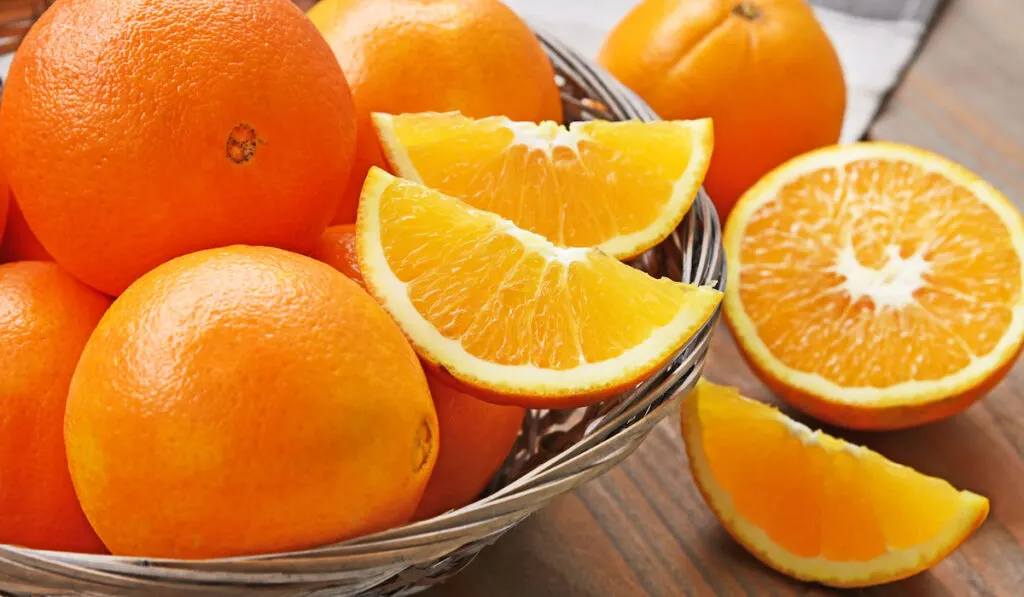
Navel oranges have all the best-loved characteristics of citrus fruits: they are sweet, full of vitamins, and seedless.
If you look closely, you’ll discover a second, smaller orange developing at the very end of the fruit, giving it its characteristic bellybutton appearance and name.
Because the flowers that navel orange trees produce have no vital pollen or ovules, all fruits of the navel orange are seedless.
New navel orange trees can be grown by cutting a bud from an existing tree and grafting it onto a stem, root, or branch of another fruit tree genetically compatible with navel oranges to continue their growth together.
The original tree responsible for navel oranges has been lost to history. Most historians agree that it came from a branch of a ‘Selecta’ orange tree in Bahia, Brazil, between 1810 and 1820.
Satsumas

Satsumas, also known as satsuma mandarins or satsuma oranges, are a variety of small mandarin oranges.
They’re easy to peel because their skin isn’t tightly bonded to the orange, and they’re seedless. Satsuma originated in Japan and is now grown in subtropical climates worldwide.
Roughly a hundred unique Satsuma species are available. They are different from one another in terms of maturity, shape, color, size, and quality.
Because satsumas can arise from unpollinated flowers, the vast majority of them do not contain seeds. Occasionally, a tiny green seed will appear in the fruit, although this is uncommon.
The simplest method for spreading Satsuma orange trees is by grafting. You can still cultivate one from a seed, but it may not have the same quality as the mother plant.
Clementines
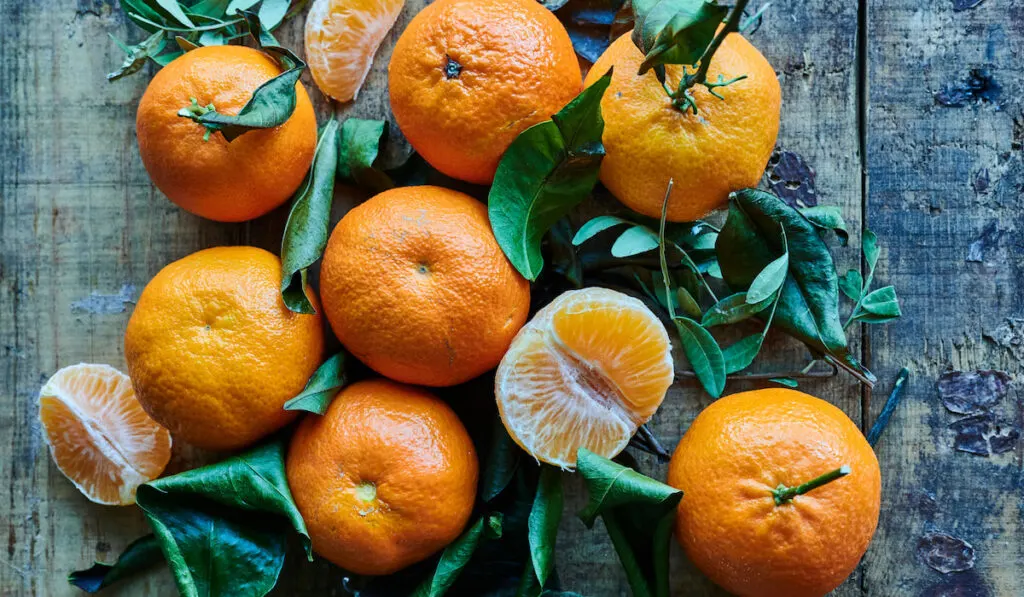
The origin of the clementine can be traced back to southern China. This fruit is a hybrid of the mandarin and the ‘Seville’ orange. These little orange fruits are easier to peel than other citrus fruits, often lack seeds, and have a sweeter flavor.
The clementine, however, is not a true seedless fruit. If the clementine tree is left to grow independently, bees will pollinate the fruit, and it will contain seeds.
That’s why farmers cover citrus trees with netting to prevent pollination by bees and produce fruit without seeds.
But if some bees find a way around the barriers and pollinate the blossoms, either way, it’s good to know that seeds in your fruit are a natural occurrence.
Persian Limes
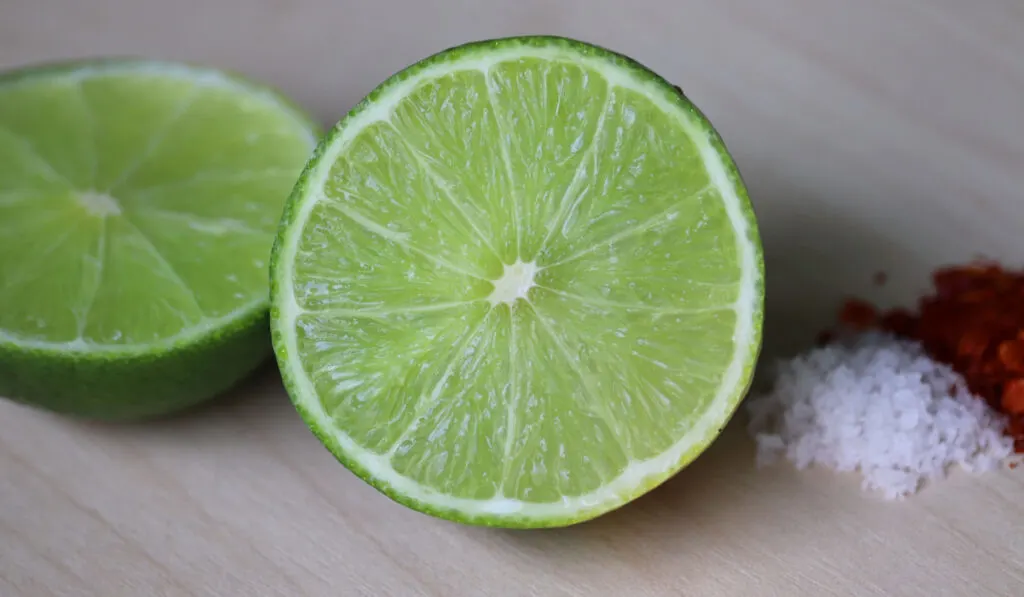
Persian limes, Bearss limes, Tahitian limes, and seedless limes are all names for the same hybrid citrus fruit that have been bred for commercial use. Persian limes are another example of seedless citrus fruits that don’t have pollination requirements.
The fruit, which is roughly the size and shape of a lemon, has a green skin that turns yellow when it becomes ripe. A Persian lime’s soft, acidic pulp is light green to yellow.
The fruit is acidic and has a fragrant, spicy aroma but is not as sharply sour as true lime.
Grafting techniques used by farmers facilitate the commercial production of Persian lime trees and seedless fruits. In effect, this creates a clone of the mother plant, guaranteeing the continuation of seedless lime production.
5. Grapes
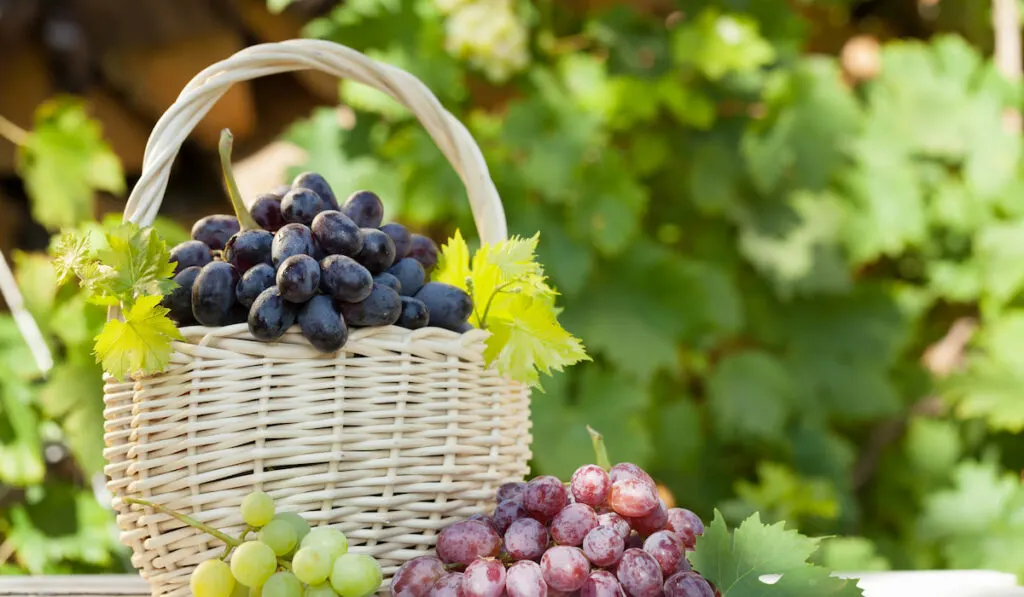
These days, seedless grapes may be your only option while shopping for grapes at the supermarket. They now account for 80% of all grapes marketed in the USA.
Grapes with no seeds have all the flavor and juiciness of regular grapes without the hassle.
People worried that seedless grapes were created through genetic engineering can rest easily. Historically, grapes were grown seedless due to a natural genetic mutation that prevented the immature seeds from developing a seed coat.
The ability to grow plants not just from seeds but also from cuttings is a great advancement in our knowledge. The method involves taking a cutting from the vine or branch, dipping it in rooting hormone, and then planting it in soil that is damp enough to encourage the growth of a new plant.
New grapevines are essentially clones of the vine the cuttings were clipped from.
Seedless grapes are ideal for fresh-eating table grapes, wine grapes, jams, and jellies. They are available in a wide range of colors, from white to red, blue to green.
White Grapes – ‘Marquis’
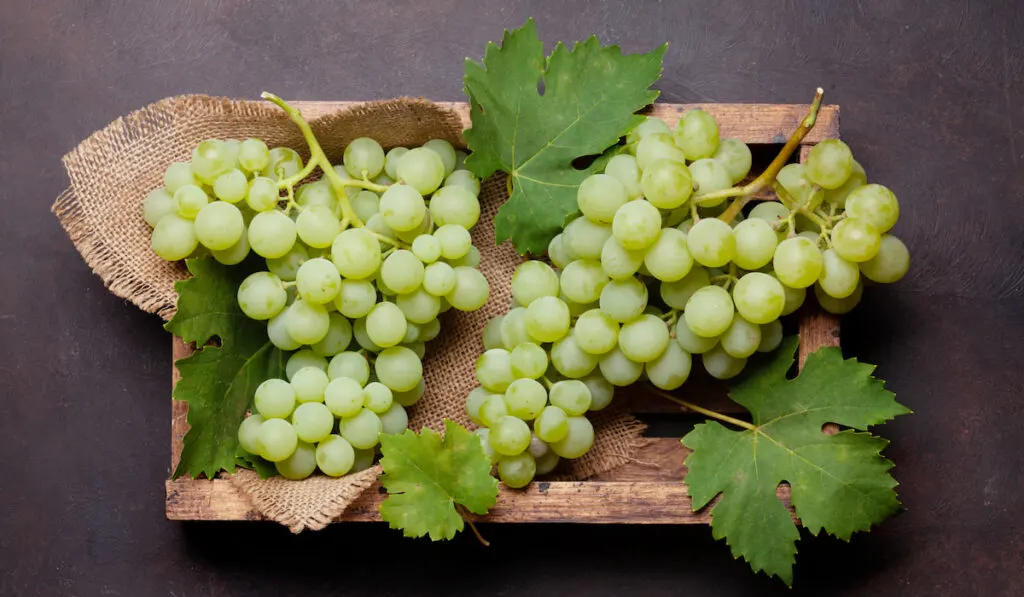
The ‘Marquis’ grape, a white seedless variety, has a delicate sweetness and a rich flavor. White grapes are large, visually appealing berries which mature between mid- and late September. Vines are hardy and productive.
Red Grapes – ‘Vanessa’
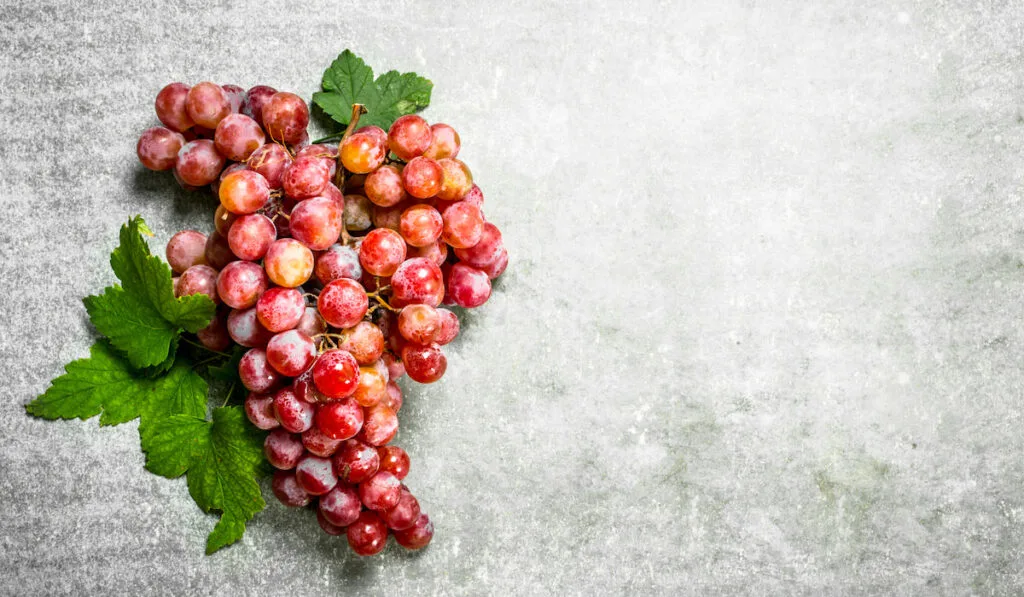
‘Vanessa’ is a red seedless grape with an excellent flavor and crisp texture. This seedless grape vine is reasonably vigorous and extremely hardy. The grapes are medium in size and ripen between mid and late September.
Blue Grapes – ‘Glenora’
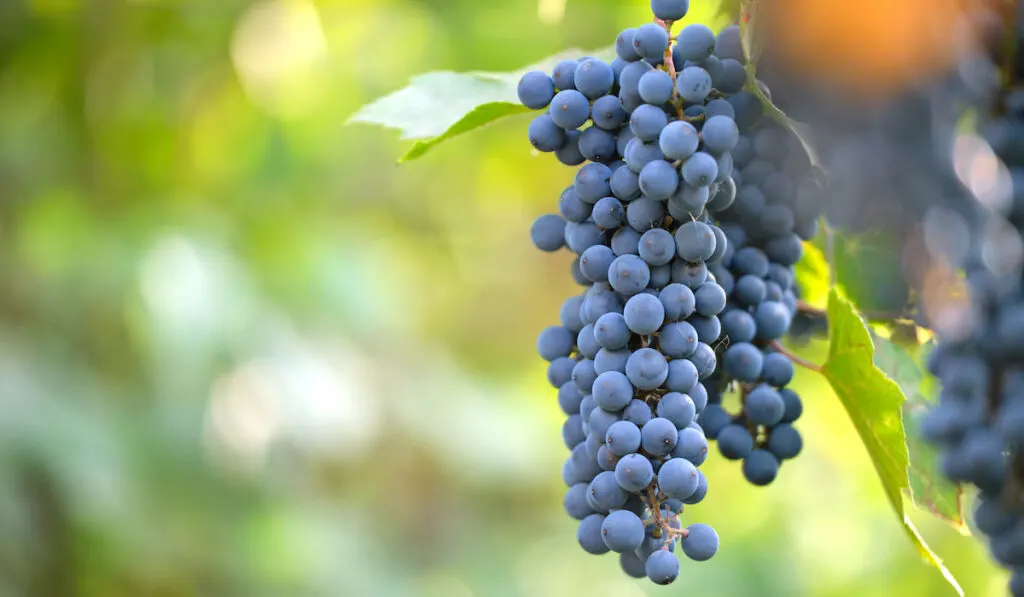
‘Glenora’ bears medium-sized blue berries. Fruit is of exceptional quality and flavor. Due to its weak winter hardiness, it is only suitable for warmer climates. By the middle of September, the fruits are ready to eat.
Green Grapes – ‘Thompson’
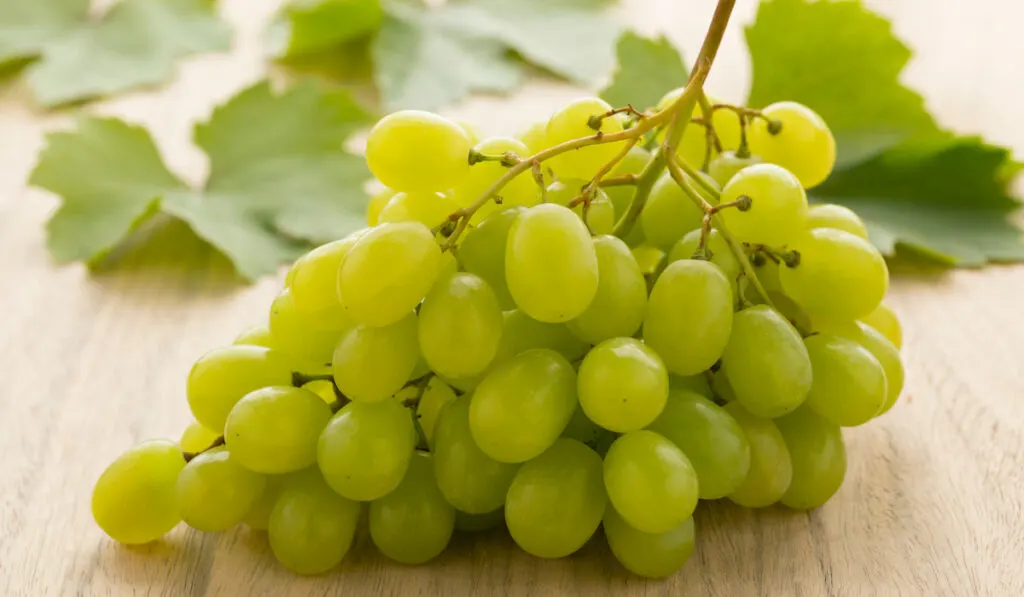
‘Thompson’ has a long history of popularity as a delicious table grape, and it’s the go-to grape for producing raisins. Thompson grapes are notable for their huge, dense clusters and exceptional flavor.
Final Thoughts
In recent decades, numerous seedless fruit varieties have been developed thanks to advances in science and breeding techniques.
From grafting plants and creative ways to prevent flower pollination to modern genetic procedures, developing new species of fruits and vegetables is becoming easier and easier.
Do yourself a favor and sample some seedless fruits today. You won’t regret the experience. Enjoy!
Resources
- https://www.britannica.com/science/parthenocarpy
- https://vegcropshotline.org/article/seedless-fruit-production/
- https://en.wikipedia.org/wiki/Seedless_fruit
- https://www.newscientist.com/article/mg25133510-100-no-theres-nothing-wrong-with-seedless-fruits/
- https://www.canr.msu.edu/news/seedless-fruit-is-not-something-new
- https://www.watermelon.org/watermelon-101/facts-faqs/
- http://www.apscience.org.au/pbf_02_3/; https://lab.plant-humanities.org/Banana/;
- https://www.newsweek.com/worlds-bananas-are-clones-and-they-are-imminent-danger-publish-monday-5am-1321787;
- https://time.com/5730790/banana-panama-disease/;
- https://www.wired.com/2017/03/humans-made-banana-perfect-soon-itll-gone/
- https://nuplantcare.com/how-is-pineapple-a-fruit/
- https://www.garden.eco/do-navel-oranges-have-seeds;
- https://www.gardeningaustin.com/blog/-no-seeds-to-grow-a-navel-orange-tree;
- https://www.specialtyproduce.com/produce/Seedless_Satsuma_Tangerines_7314.php;
- https://plantura.garden/uk/fruits/satsuma/satsuma-overview;
- https://www.alimentarium.org/en/fact-sheet/clementine;
- https://eyouagro.com/blog/seedless-clementine-trees/;
- https://www.alamy.com/netting-protecting-clementine-mandarin-orange-orchard-against-cross-pollination-polyethylene-fine-mesh-netting-image179059786.html;
- https://www.healthbenefitstimes.com/persian-lime/
- https://dljproduce.com/how-did-seedless-grapes-start-anyway/;
- https://www.scienceworld.ca/stories/ever-wonder-about-seedless-grapes/;
- https://ag.umass.edu/home-lawn-garden/fact-sheets/grapes-seedless-table-varieties
